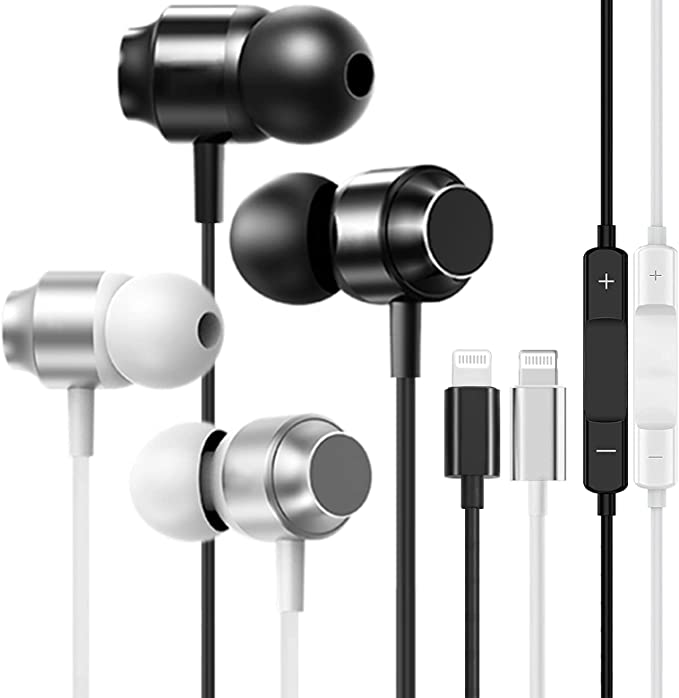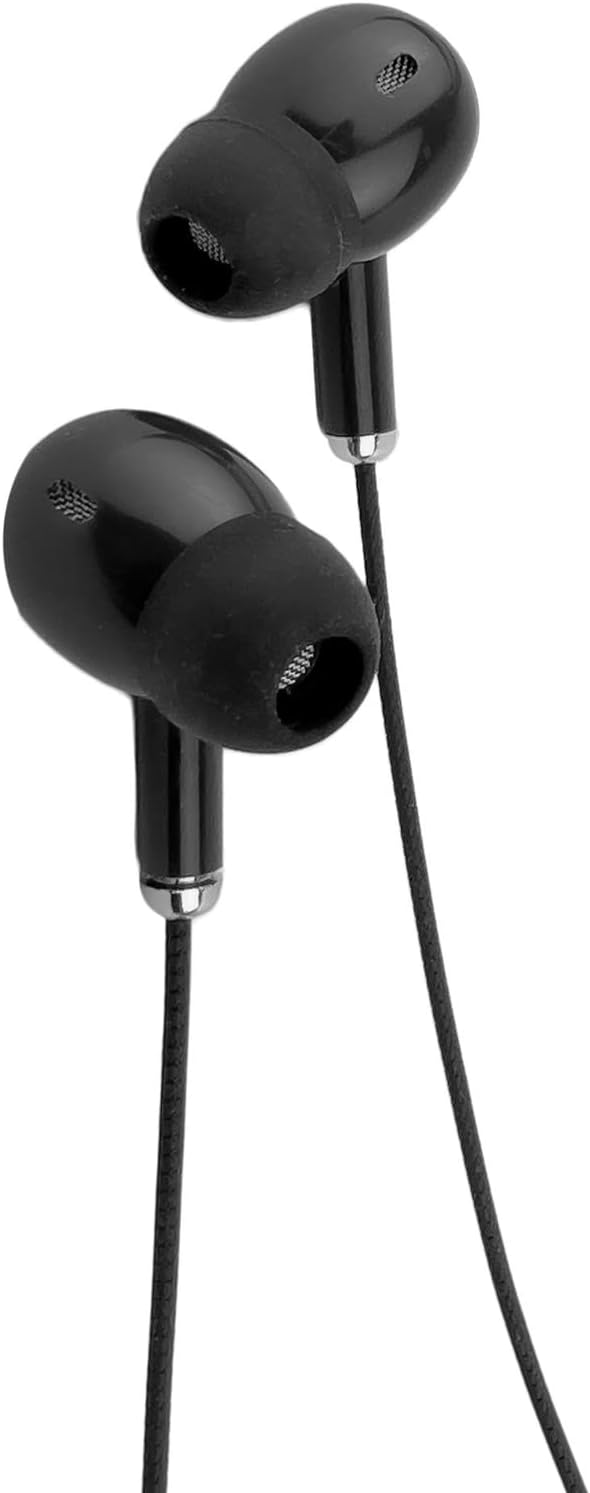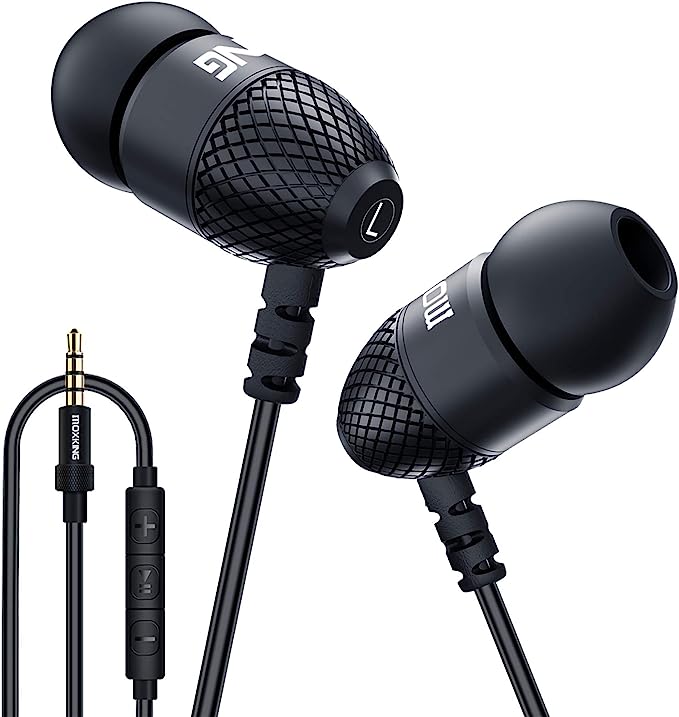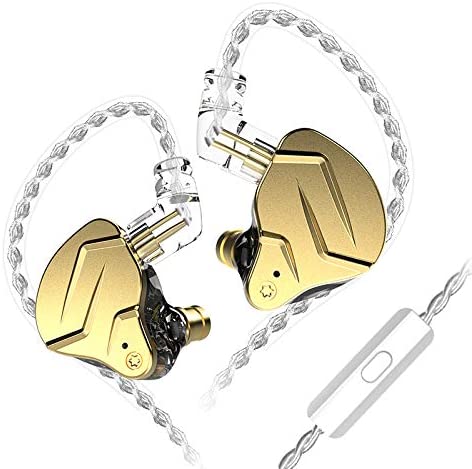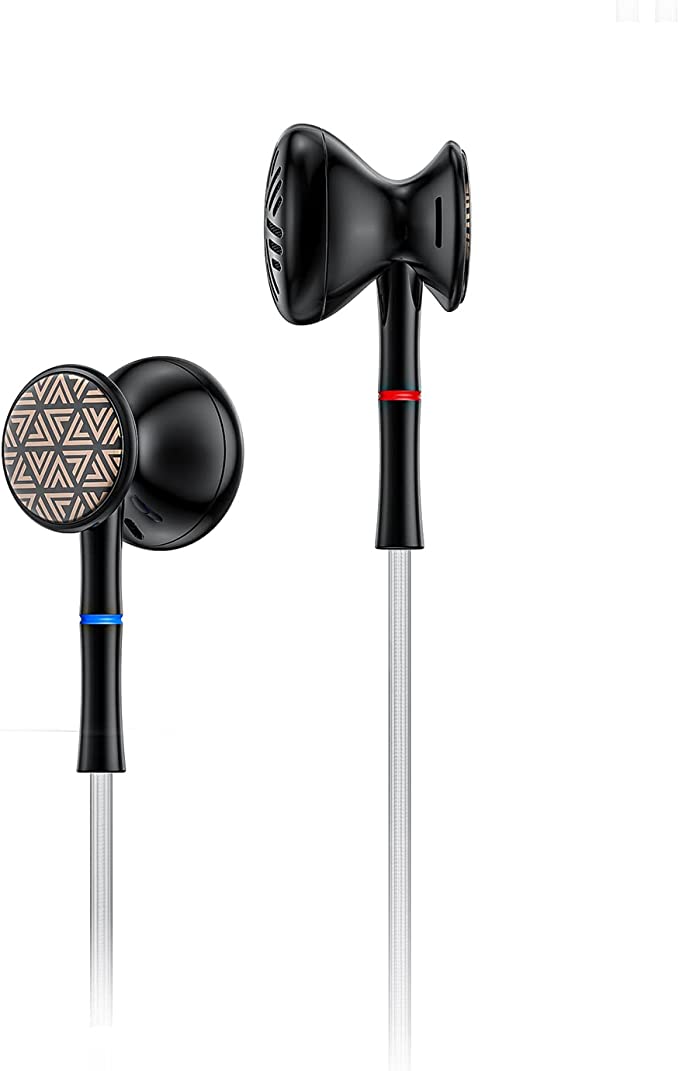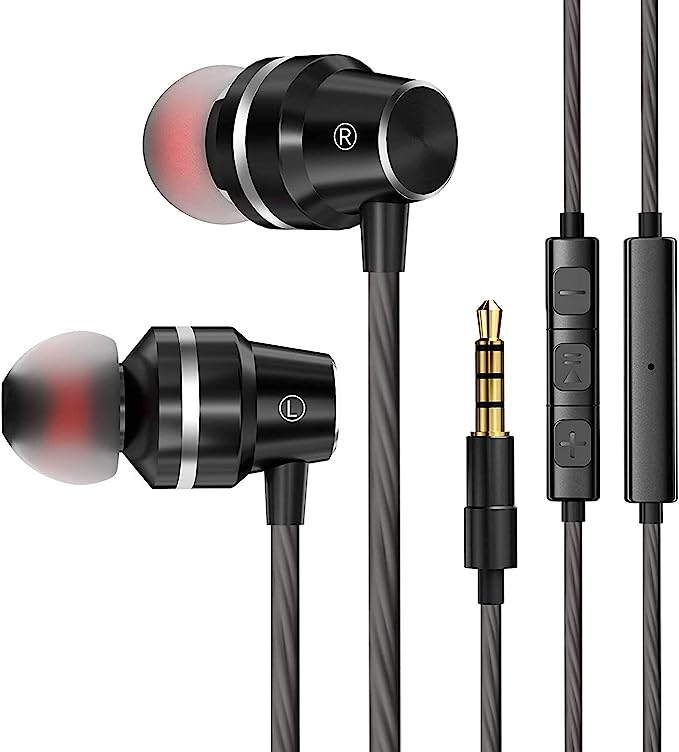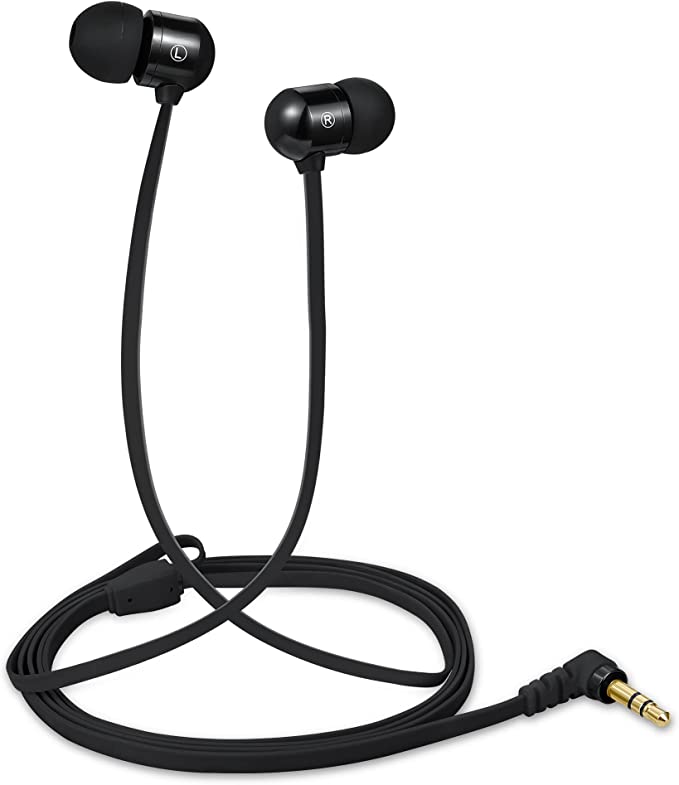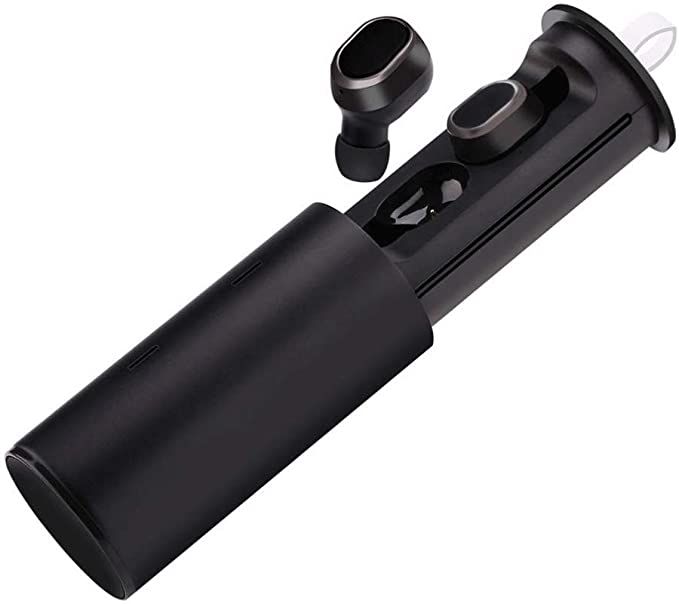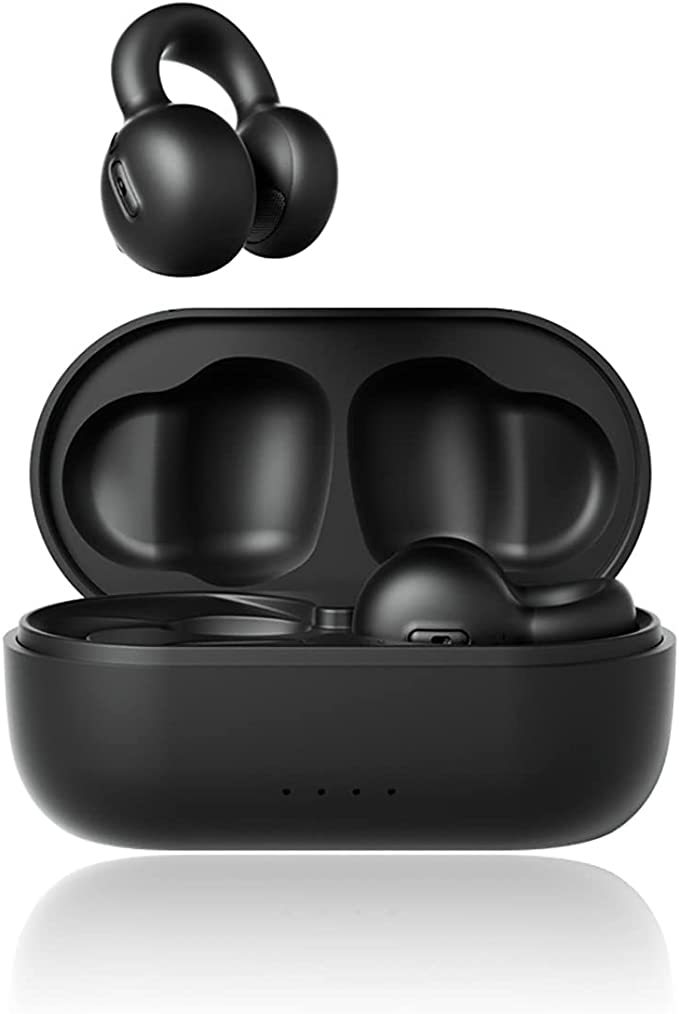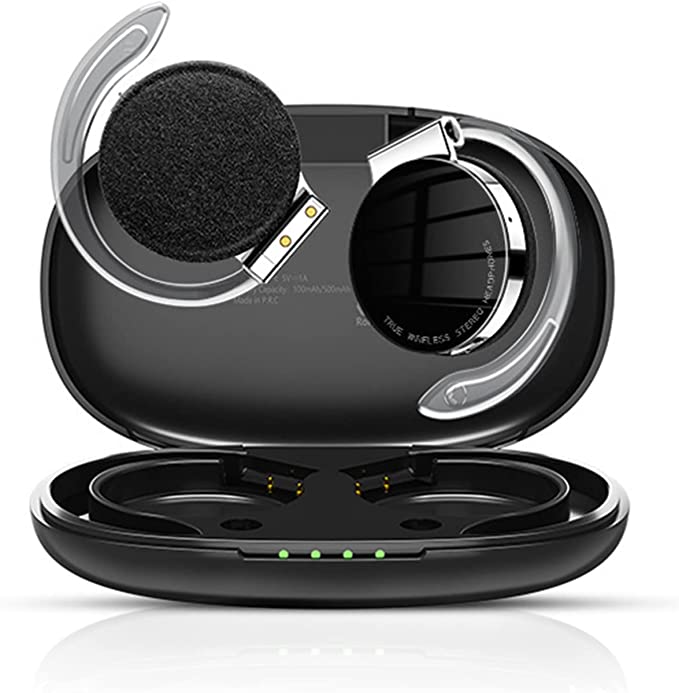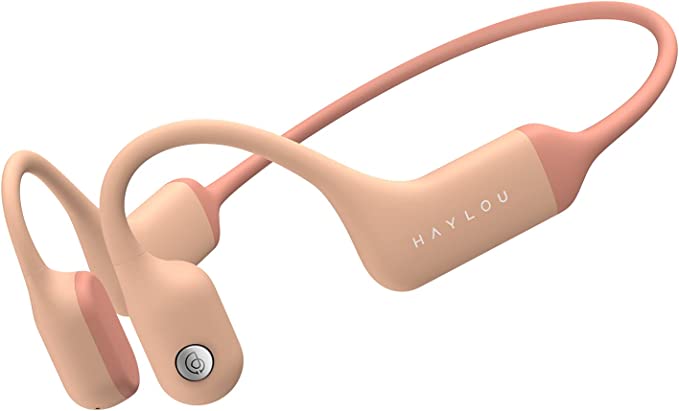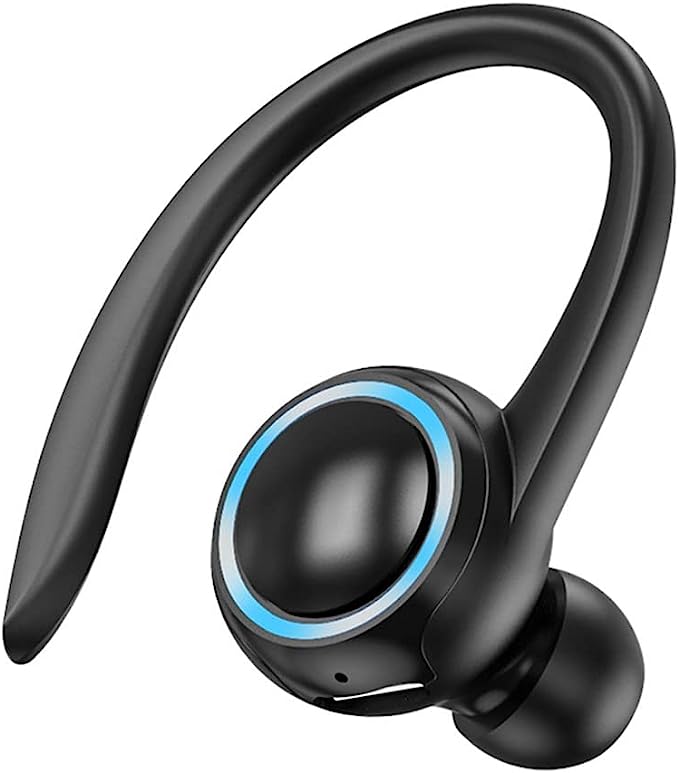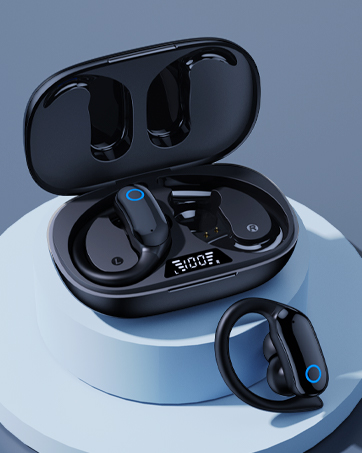The Unseen Science in Your Budget Earbuds: A Deep Dive into the TSCYYDS TSC32
Update on Aug. 12, 2025, 2:54 p.m.
In the vast, churning ocean of online marketplaces, a new species of electronic device has become ubiquitous. It arrives in simple packaging, bearing a brand name that seems algorithmically generated, yet it promises a suite of features typically associated with far more expensive counterparts. The TSCYYDS TSC32 Heavy Bass Wired in-Ear Headphones are a perfect specimen of this phenomenon. At first glance, they are one of many, a budget-friendly option for music on the go. But a closer look at the product’s identity reveals a fascinating story about modern manufacturing, and a deeper dive into its features uncovers a surprising amount of sophisticated science and engineering packed into its unassuming frame.
The first clue that there is more to the TSCYYDS TSC32 than meets the eye lies in its scattered identity. Product listings identify the brand as “TSCYYDS”. The manufacturer, however, is listed as a different entity: “FCERDC”. Digging into trademark databases reveals yet another name, with the “TSCYYDS” trademark being owned by the “Mengqihang brand”. This tripartite identity—a brand, a manufacturer, and a trademark holder, all seemingly distinct—is a classic hallmark of what is known in the industry as a “white-label” product. The concept is simple: one company, the manufacturer (in this case, likely FCERDC), produces a generic product. Other companies, the marketers, then purchase this product, apply their own branding (like TSCYYDS), and sell it as their own. It is the same principle behind a grocery store’s own-brand cereal or a generic television sold under a dozen different names. This practice is especially common for mass-produced electronics, where companies can source products from large manufacturing hubs, add their logo, and bring them to market with minimal overhead.

Understanding this white-label nature is crucial. It immediately shifts the analytical focus away from a non-existent brand legacy or a “TSCYYDS design philosophy.” Instead, it encourages an evaluation of the product as a deliberate assembly of available technologies and design choices, selected from a manufacturer’s catalog to compete in a specific market niche. This frees us to look past the name and examine the object itself.
Therefore, this article will not be a simple review. Instead, we will use the TSCYYDS TSC32 as a practical case study—a lens through which we can deconstruct the science behind its core marketing claims. We will explore the physics that makes its “wired” connection truly “delay-free.” We will dissect the mechanical engineering that delivers its promised “heavy bass.” We will analyze the biomechanics and material science that underpin its “sports headphone” design. And finally, we will delve into the surprising intersection of knot theory and geometry that makes its “tangle-free cable” possible. By the end, we will have uncovered the invisible, yet powerful, scientific principles that govern not just this one pair of earbuds, but a vast array of the everyday gadgets we so often take for granted.

The Unbroken Signal - Why a Wire Still Matters in a Wireless World
In an era dominated by the convenience of Bluetooth, the decision to produce and purchase a wired headphone seems almost anachronistic. Yet, the TSCYYDS TSC32 proudly advertises its wired connection as a key feature, promising a “delay-free” experience. This is not merely a cost-saving measure; it is a claim rooted in the fundamental physics of signal transmission, highlighting a key area where the old-fashioned wire still holds a significant, measurable advantage over its wireless successors.
The Physics of the Signal: Analog Purity vs. Digital Compromise
The core difference between wired and wireless audio lies in the nature of the signal itself. A wired headphone receives a pure, analog electrical signal that travels uninterrupted from the audio source (like a smartphone or laptop) directly to the headphone’s drivers. This analog wave is a direct, continuous representation of the original sound wave, preserving the nuances and integrity of the audio data. The process is elegantly simple: what the source outputs, the headphone receives.
Wireless transmission, by contrast, is a far more complex and compromised process. To travel through the air via Bluetooth, the original analog audio must first be converted into a digital signal. Because Bluetooth technology has a limited data transmission capacity, or bandwidth, this digital signal must be compressed to make it smaller. This is typically “lossy” compression, meaning that to reduce the file size, algorithms intelligently discard parts of the audio data deemed least audible to the human ear. The compressed digital signal is then transmitted wirelessly to the headphones. Once received, the headphones must use their own internal hardware—a Digital-to-Analog Converter (DAC) and an amplifier—to decompress the signal and convert it back into an analog electrical wave that can power the drivers. Every step in this chain—compression, transmission, reception, decompression, and conversion—introduces the potential for signal loss, interference, and, most critically, delay. For casual listeners, this subtle degradation in audio fidelity might be unnoticeable, but for audiophiles listening to high-resolution, uncompressed audio formats, the difference can be significant.

The Science of Speed: A Quantitative Look at Latency
The most tangible consequence of this complex wireless process is latency. Latency is the measurable delay, in milliseconds, between an event happening on-screen (a character speaking, a gunshot in a game) and the corresponding sound being played in the headphones. For wired connections, this delay is practically nonexistent. The signal travels at nearly the speed of light through the copper cable, resulting in a latency that is typically measured between just 5 to 10 milliseconds (
ms). One real-world test measured the delay of a wired headset at a mere 0.142 seconds.
Wireless headphones cannot compete with this speed. The time required for the encoding, transmission, and decoding process introduces a significant delay. Depending on the specific Bluetooth codec used, latency can range from an acceptable 40 ms for specialized low-latency codecs like aptX LL, to a more common 100-200 ms for standard codecs like SBC and aptX, and can even exceed 300 ms in some cases. As one user on a gaming forum noted, even a delay of around 0.25 seconds is enough to create a maddening disconnect between video and audio, making movies unwatchable and voice calls feel unsynchronized.
This is where the “delay-free” claim of the TSCYYDS TSC32 becomes a precise and strategic technical statement. While this latency may be irrelevant for simply listening to a music playlist, it is a critical factor for latency-sensitive applications. For competitive gamers, a 150 ms delay can be the difference between winning and losing. For video editors trying to sync audio tracks to visuals, or for movie enthusiasts wanting perfect lip-sync, the near-zero latency of a wired connection is not a luxury but a necessity. The choice to highlight this “delay-free” nature is a direct appeal to consumers for whom the primary use case extends beyond passive music consumption.

The Practical Pillars of Wired Reliability
Beyond the scientific advantages in signal purity and speed, the wired connection of the TSCYYDS TSC32 offers a trio of practical benefits that define its niche. First and foremost is the freedom from battery constraints. Wired headphones draw their minuscule power requirements directly from the audio source, meaning they will work as long as the connected device has charge. There is no need to remember to charge them, no “low battery” warning interrupting a critical moment, and no eventual battery degradation that renders the device useless—a key sustainability advantage.
Second is the unwavering reliability of the connection. A physical cable is immune to the signal dropouts, pairing failures, and range limitations that can plague Bluetooth headphones, especially in environments with heavy wireless interference, such as a crowded office or public transit. The connection is simple and absolute. Finally, this simplicity translates directly to affordability. By omitting the need for batteries, Bluetooth transceivers, internal DACs, and amplifiers, manufacturers can produce wired headphones at a significantly lower cost than their wireless counterparts, delivering superior performance on key metrics like latency and audio fidelity for a fraction of the price. This calculated trade-off—sacrificing the convenience of mobility for superior performance, reliability, and cost—is the foundational engineering and marketing decision that allows a product like the TSCYYDS TSC32 to carve out a meaningful space in a market saturated with wireless alternatives.
Decoding “Heavy Bass” - The Mechanics of the Moving Coil
The promise of “Heavy Bass” is one of the most common and effective marketing claims in the world of consumer audio. It speaks to a visceral, energetic listening experience that many users crave, especially for genres like hip-hop, EDM, and cinematic scores. For the TSCYYDS TSC32, this claim is not arbitrary; it is the direct result of leveraging the inherent physical properties of its sound-producing engine: the dynamic driver. Understanding this mechanism reveals how “heavy bass” is engineered and the specific trade-offs that come with it.
The Engine of the Sound: Introducing the Dynamic Driver
At the heart of the vast majority of headphones on the market, from the cheapest earbuds to high-end cans, lies a technology known as the dynamic driver, or “moving coil” driver. It is the most common and cost-effective method for converting an electrical signal into sound, and its operation is a beautiful demonstration of basic electromagnetism. The process, as detailed in technical explanations, unfolds in a few key steps :
- The Signal Arrives: The analog electrical signal, representing the music, travels down the headphone cable and into a finely wound voice coil, typically made of copper.
- Electromagnetism at Work: This voice coil is suspended within the magnetic field of a powerful, fixed magnet, usually made of a strong rare-earth material like neodymium. When the electrical current of the audio signal flows through the coil, it generates its own fluctuating magnetic field.
- Motion is Created: The interaction between the permanent magnet’s field and the voice coil’s newly generated, fluctuating field creates a force (the Lorentz force) that causes the voice coil to move rapidly back and forth, perfectly in time with the oscillations of the audio signal.
- Air is Displaced: Attached to this moving voice coil is a lightweight, stiff, cone-shaped membrane called the diaphragm. As the coil vibrates, the diaphragm is pushed and pulled along with it.
- Sound is Produced: This movement of the diaphragm displaces the air in front of it, creating waves of high and low pressure. These pressure waves are the sound waves that travel through the ear canal to the eardrum, which our brain interprets as music.
Engineering for “Heavy Bass”: The Physics of Low Frequencies
The key to producing a powerful bass response lies in moving a large volume of air. Low-frequency sound waves are long and require significant energy to reproduce with impact. The dynamic driver’s design is exceptionally well-suited for this task. The “substantial amount of air displacement” achieved by the moving diaphragm is precisely what gives dynamic drivers their renowned ability to produce a punchy, impactful, and dynamic bass response.
Engineers can further enhance this bass performance through several deliberate design choices. One common method is to increase the size of the driver. While driver size alone does not guarantee better sound quality, a larger diaphragm generally has a larger surface area, allowing it to move more air with each vibration, which can contribute to a more powerful and cleaner-sounding bass. Some headphones specifically designed for extreme bass, like certain Sony models, have employed massive 70 mm drivers to produce what users describe as “huge amounts of bass” that smaller drivers cannot replicate. Another technique involves the use of small vents or ports in the headphone’s housing. These vents allow air to move more freely in and out of the chamber behind the driver, further boosting the total air movement and enhancing the low-frequency response. The combination of a capable dynamic driver, potentially of a generous size, and carefully placed venting is the engineering recipe for the “heavy bass” promised by the TSCYYDS TSC32.
The Inherent Trade-Offs of Bass-Tuning
However, engineering for maximum bass is not without its compromises. A design that excels at producing thunderous lows often does so at the expense of accuracy in other parts of the frequency spectrum. This introduces a critical, nuanced understanding of the term “heavy bass.” It is a specific tuning choice, not a universal improvement in quality.
One of the primary physical limitations is a phenomenon known as “modal break-up.” An ideal diaphragm would move as a single, rigid piston at all frequencies. However, at very high volumes or high frequencies, a large diaphragm designed for powerful bass can begin to flex and warp, with different parts of its surface moving out of sync. Instead of a clean pistonic motion, it begins to “jiggle like jello”. This uncontrolled flexing introduces significant distortion and can create unwanted peaks and harshness in the midrange and treble frequencies.
This is why headphones tuned for heavy bass are often described as having a “V-shaped” or “fun” sound signature, where the bass and treble are boosted relative to the midrange. This tuning is exciting and engaging for many listeners and genres, but it stands in stark contrast to “reference” or “audiophile” headphones that prioritize a flat, accurate frequency response across the entire spectrum. Therefore, the “heavy bass” of the TSCYYDS TSC32 represents a deliberate engineering and marketing decision. It leverages the natural strengths of the cost-effective dynamic driver technology to appeal to a mainstream audience that prioritizes low-end impact over absolute sonic fidelity. It is a choice that defines its character and its target listener.
The Science of a Secure Fit - Engineering for an Active Life
The claim of being “On-Ear Sports Headphones” is central to the identity of the TSCYYDS TSC32. In the context of athletic activity, “sports” is not a stylistic descriptor but a promise of functional performance. It implies a design that can withstand motion, remain comfortable over extended periods, and resist the damaging effects of sweat. This promise is delivered not by chance, but through the specific application of biomechanical principles and material science, most notably embodied in the ear-hook design.
The Biomechanics of Stability: Why Ear Hooks Work
The single greatest challenge for any headphone used during exercise is stability. Standard in-ear earbuds, which rely solely on the friction and seal created by a silicone tip inside the ear canal, are notoriously prone to dislodging during high-impact activities like running or kettlebell swings. The ear-hook design directly addresses this fundamental flaw by employing a superior biomechanical principle.
Instead of concentrating the entire weight and force of the earbud on a single point within the ear canal, an ear hook distributes that load across the larger, more stable structure of the pinna (the visible outer ear). This simple shift in leverage dramatically increases stability. Furthermore, the hook is designed to wrap over and anchor onto the ear’s natural cartilage, specifically leveraging the firm ridge known as the
antihelix. This creates an anti-rotation mechanism that prevents the earbud from twisting or shaking loose, even during vigorous movement. The effectiveness of this design is well-documented; one analysis found that ear-hook models exhibit 72% less movement during activity compared to their standard in-ear counterparts. This principle is the cornerstone of many of the most successful and highly-regarded sports headphones on the market, including the Beats Powerbeats Pro and the JLab Go Sport+.
The Material Science of Comfort and Durability
While the geometry of the hook provides stability, the choice of materials determines comfort and longevity. The product description for the TSCYYDS TSC32 highlights a “comfortable design” and “sweat-resistant construction”. These features are critical for a positive user experience during a workout.
The hooks themselves are typically made from flexible materials like medical-grade silicone or soft rubber, sometimes reinforced with a shape-memory alloy or wire. This flexibility allows the hook to conform to the unique shape of each individual’s ear, ensuring a secure fit without uncomfortable pinching or pressure points. This focus on ergonomics is vital for long-term wear. A 2023 Stanford study highlighted a significant benefit of this approach, finding that users of ear-hook designs experienced 27% less pressure within the ear canal compared to those using traditional in-ear models. This reduction in pressure directly translates to less auditory fatigue, making it possible to wear the headphones for extended periods without pain or discomfort.
The claim of “sweat-resistant construction” is also a key material consideration. While the TSCYYDS TSC32 does not advertise a formal Ingress Protection (IPX) rating—a standardized measure of water and dust resistance—the claim implies that the materials and seals used are chosen to prevent moisture from sweat from damaging the internal electronics. Competitors in this price range, like the JBL Endurance Run 2 and MEE audio M6, often carry an official IPX5 rating, which certifies protection against jets of water. The absence of such a rating on the TSCYYDS is a critical point of differentiation. It is a likely consequence of its white-label, cost-focused manufacturing model. Achieving and certifying an official IP rating adds significant expense to the design and testing process. By opting for materials that are inherently resistant to moisture but forgoing the costly certification, the manufacturer can keep the price low. This makes the TSCYYDS TSC32 suitable for a typical gym workout but potentially a riskier choice for running in heavy rain compared to its officially certified competitors, a crucial distinction for the informed consumer.
The Unraveling Problem - Knot Theory in Your Pocket
Of all the features advertised for the TSCYYDS TSC32, the “Tangle-Free Cable” may be the most universally appreciated. The frustration of pulling a hopelessly knotted pair of headphones from a pocket or bag is a modern-day grievance that transcends demographics. What seems like a simple annoyance is, in fact, a manifestation of profound principles in physics and mathematics. The solution employed by the TSCYYDS TSC32—a flat, ribbon-like cable—is a surprisingly elegant piece of engineering that directly counters the forces of chaos.
Introducing Knot Theory and Thermodynamics
The tendency for cords to tangle is not a matter of bad luck; it is a matter of probability and physics. The phenomenon can be explained by the second law of thermodynamics, which states that any isolated system will tend toward a state of maximum disorder, or entropy. In the universe of a headphone cord in a pocket, there are vastly more possible configurations that count as “tangled” than there are that count as “neatly coiled.” Every jiggle and jostle pushes the cord toward one of these more probable, disordered, knotted states.
This intuitive concept was given rigorous scientific backing by a 2007 study from the University of California, San Diego. Researchers Dorian Raymer and Douglas Smith tumbled strings of varying lengths in a box and found that for a string of sufficient length (over 46 cm), the formation of a knot was not just possible, but virtually certain given enough agitation. The key ingredients for this spontaneous knotting are cable length, the presence of free ends that can pass through loops, and agitation.
The Solution in Geometry: Why Flat Cables Resist Tangling
The solution to this thermodynamic inevitability lies not in fighting entropy, but in changing the rules of the game through geometry. This is where a branch of mathematics known as “self-avoiding random walk theory” comes into play. For a knot to form, a cord must be able to move freely and create complex loops in all three spatial dimensions (
x, y, and z). It needs to be able to bend, twist, and have its ends pass through the loops it has created.
A standard round cable is perfectly suited for this, as it is equally flexible in all directions. It can bend and twist with ease, readily forming the complex, three-dimensional contortions required for a knot. A flat, ribbon-like cable, however, has fundamentally different physical properties. It is highly flexible along its wide axis—it can be coiled or bent easily in two dimensions. But it is inherently stiff and resistant to bending along its narrow axis. This stiffness effectively restricts its ability to move freely in the third dimension.
This geometric constraint is the key to its tangle-resistant nature. By making it physically difficult for the cable to perform the sharp, three-dimensional bends and twists necessary to form a knot, the design drastically reduces the statistical probability of one forming. The analogy of pasta is apt: trying to tie a knot in a piece of flat tagliatelle is far more difficult than tying one in a piece of round spaghetti because the tagliatelle resists the necessary twisting motion. While no flexible cable can be completely “tangle-proof,” this simple change in geometry from round to flat is a powerful and effective deterrent. It is a sophisticated, low-cost solution that leverages fundamental physics to solve a high-frustration user problem, making it an ideal feature for a competitive budget product.
The Marketplace - Positioning the TSCYYDS TSC32 in a Crowded Field
Having deconstructed the science behind its individual features, the final step is to synthesize this analysis and understand the TSCYYDS TSC32 not in a vacuum, but within the context of its competitive landscape. A product’s value is always relative, defined by the alternatives available to the consumer. By comparing it directly to its peers in the budget wired sports headphone category, we can clearly identify its unique strengths, weaknesses, and overall market position.
Presenting the Competitive Landscape
The research identifies several key competitors that occupy a similar niche in terms of price and intended use. The most prominent among these are the JBL Endurance Run 2, the Linsoul KZ ZSN Pro X, and the MEE audio M6. Each of these products, like the TSCYYDS TSC32, offers a specific combination of features aimed at the budget-conscious consumer seeking headphones for an active lifestyle. A detailed comparison reveals the strategic trade-offs each manufacturer has made.
The following table provides a summary of this competitive analysis, drawing on data from technical reviews and product specifications to create a clear, at-a-glance comparison.
| Feature | TSCYYDS TSC32 (Advertised) | JBL Endurance Run 2 | Linsoul KZ ZSN Pro X | MEE audio M6 |
|---|---|---|---|---|
| Price Point (Approx.) | ~$20 | ~$20 | ~$24 | ~$20 |
| — | — | — | — | — |
| Primary Design | In-Ear with Ear Hook | In-Ear (TwistLock fit) | In-Ear with Ear Hook | In-Ear with Memory Wire Hook |
| — | — | — | — | — |
| Key Audio Feature | “Heavy Bass” | Balanced Sound, Brand Heritage | High-Fidelity Sound | Punchy Sound, “Energetic” |
| — | — | — | — | — |
| Driver Type | Dynamic (Inferred) | Dynamic | Hybrid (1 Dynamic + 1 Balanced Armature) | Dynamic |
| — | — | — | — | — |
| Cable Type | Flat, Tangle-Resistant | Standard Round (Prone to tangling) | Braided, Detachable (Tangles easily) | Standard Round (Memory Wire) |
| — | — | — | — | — |
| Water Resistance | “Sweat-resistant” | IPX5 | None specified | IPX5 |
| — | — | — | — | — |
| Key Differentiator | Physics-based Tangle-Free Cable | Brand Recognition, IPX5 Rating, Magnetic Clip | Superior Audio Tech (Hybrid Driver) | IPX5 Rating, Memory Wire Fit |
| — | — | — | — | — |
Analysis of the Comparison
The data in the table illuminates the distinct strategy behind each product.
- Audio Quality: The Linsoul KZ ZSN Pro X stands out as the likely leader in pure audio fidelity. Its hybrid driver system, which combines a dynamic driver for bass with a separate balanced armature driver for mids and highs, is a technology typically found in much more expensive audiophile earphones. This design should provide greater clarity and detail compared to the single dynamic driver systems in the other models. The TSCYYDS TSC32, with its explicit focus on “heavy bass,” likely prioritizes low-end impact over the balanced, nuanced sound of the Linsoul.
- Durability and Sports Functionality: Here, the JBL Endurance Run 2 and MEE audio M6 hold a clear, objective advantage. Their official IPX5 water resistance ratings provide certified protection against sweat and rain, making them a more reliable and safer choice for users who engage in intense workouts or frequently exercise outdoors. The TSCYYDS TSC32’s vague “sweat-resistant” claim offers some peace of mind but lacks the verifiable assurance of a standardized IP rating.
- Convenience and Unique Selling Proposition (USP): This is where the TSCYYDS TSC32 carves out its unique niche. Its primary, standout feature within this competitive set is its flat, tangle-resistant cable. While the Linsoul model offers a detachable cable—a desirable feature for audiophiles who like to upgrade components—its braided cable is still noted as being prone to tangling. The JBL’s standard round cable is also identified as a weak point for tangles. The TSCYYDS TSC32 is the only one in this group that offers a direct, physics-based solution to this pervasive daily frustration.
This analysis reveals that the value proposition of the TSCYYDS TSC32 is not about being the absolute best in any single performance category. It is unlikely to sound as detailed as the Linsoul or survive a downpour as reliably as the JBL or MEE. Instead, its strategy is to offer a compelling package of “good enough” features—a secure sports fit, powerful bass, and zero-latency wired audio—combined with one standout feature that addresses a major convenience pain point. It targets the consumer who values the daily quality-of-life improvement of an untangled cable and a secure fit over achieving the highest levels of audio fidelity or environmental durability.
Conclusion - The Verdict on the Invisible Value
Our deep dive into the TSCYYDS TSC32 began with a simple, anonymously branded product and has taken us on a journey through the principles of signal physics, mechanical engineering, biomechanics, and even mathematical knot theory. We have seen how the “delay-free” promise of its wired connection is a direct consequence of transmitting a pure, uncompromised analog signal. We have learned that its “heavy bass” is the result of a cost-effective dynamic driver engineered to maximize air displacement. We have understood that its “sports” designation is earned through an ear-hook design rooted in the biomechanics of stability. And we have discovered that its “tangle-free” cable is an elegant application of geometry to counter the thermodynamic tendency toward chaos.
In the end, we must circle back to the product’s white-label identity. The TSCYYDS TSC32 serves as a powerful case study, demonstrating how the globalized, often anonymous, electronics manufacturing industry can produce items that, while lacking the prestige of a household name, are nonetheless built upon a foundation of sound scientific and engineering principles. The product is an assembly of clever, cost-effective solutions to tangible user problems.
The final verdict on the TSCYYDS TSC32 is therefore nuanced. It is not an audiophile’s dream headphone; the hybrid-driver Linsoul KZ ZSN Pro X likely offers superior sonic detail. Nor is it the ultimate rugged companion for an all-weather athlete; the IPX5-rated JBL Endurance Run 2 or MEE audio M6 provide more reliable water resistance.
However, its value lies in its unique and intelligent combination of features. It delivers a secure fit for activity, a bass-forward sound that is popular with many listeners, and a latency-free connection for gaming and video. Crucially, it pairs these competent features with one standout, convenience-oriented solution: the physics-based, tangle-resistant flat cable. For the informed consumer navigating the crowded budget electronics market, understanding this “invisible value”—the science embedded within the design—is the key to making a truly smart purchase. The ultimate worth of a product like the TSCYYDS TSC32 is not found in the name printed on its plastic shell, but in the silent, effective, and often elegant work of the physics and engineering humming away inside.


